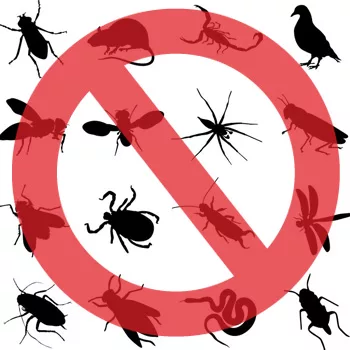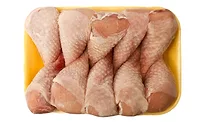Partnering for Prevention

Of all of the services the pest control industry provides, one of the most important is the protection of the food we process. Nowhere is there a greater opportunity to impact positively or negatively on the people we serve. It is an ever changing and ever more vital piece of the overall operation in food plants; regulations, safety and reputation are at stake more than ever.
Facility managers have a long list of protocols that must be met, with pest management being just one of many. But in today’s evolving regulatory environment, pest management companies and their customers must transition from simply being a providing vendor to a true partner. This partnership is critical in consistently meeting the new standards, audit requirements and satisfaction demands of their customers in a timely manner. It is imperative to the success of any program that both parties communicate openly and systematically about specific auditor criteria to prepare for inspections from various third-party auditing groups.
Logging the Details
A pest management program is required under Good Manufacturing Practices (GMPs), Hazard Analysis and Critical Control Points (HAACP) and increasing government regulations. In January 2010, the Food Safety Modernization Act (FSMA) became law, shifting the focus from food contamination response to prevention and giving the U.S. Food and Drug Administration enhanced enforcement authority. With the passage of this law and other initiatives, the emphasis on pest documentation has become more essential than ever in the food processing environment. Gone are the days when the service ticket was “proof of service.” Today’s pest management professional (PMP) must keep legible, accurate and up-to-date records on pest sightings and service protocols. This is achieved through bar-coded systems and other methods designed to provide proof that every device was checked, results noted, catch counts made, exception reports developed, materials applied, and trends in pest activity determined. Such information is now the expected norm in our industry, not the exception.
Meanwhile, other heightened responsibilities for modern day PMPs include staying current with labeling changes in order to satisfy a food plant’s quality assurance audits. Current materials safety data sheets and labels of pest management products used at each facility must be filed in order to lessen the risk of unauthorized materials being applied in particular areas.
Knowledge is Power
Another aspect of providing pest control in food plants is the increased emphasis on the training and certification of service professionals. Auditors are paying greater attention to how PMP personnel are trained in GMPs and food safety beyond past acceptable training efforts, that is, continuing education credits. Many pest management companies participate in certifications offered from the American Institute of Baking International and the National Pest Management Association (NPMA)’s QualityPro program. The good news is that the NPMA standards for food plants will ensure compliance with the Global Food Safety Initiative. However, QualityPro certification alone does not guarantee compliance with the FSMA or other food safety programs. This is mainly due to the evolving standards after the PMP has been certified. This provides the incentive for continued training and education on the newest changes in regulations and standards as it applies to food processing plants.
Furthermore, many PMP s are now partnering with clients on the continuing education front since food manufacturing companies are required to have documented safety training in place for all employees. Some pest control providers are adding value to its traditional service offerings by allowing customers to sit in on their internal continuing education classes.
Collaborating for Consistency
Clearly, documentation is crucial to an effective pest management program amid the current legislative landscape. But what about the bugs?
Continuing on our documentation theme, the Scope of Work (SOW), or detailed pest management plan, is the groundwork for all services in the facility. A clearly defined SOW spells out the roles of not only the Service Professional, but the site personnel as well; it eliminates any confusion over roles that may exist.
A SOW should include the following:
• Areas and frequency of proactive inspections
• Number of interior rodent devices and frequency serviced
• Number of exterior bait stations and the frequency serviced
• Number of insect light traps and the frequency with which they are inspected, how often the bulbs are changed
• If there is a pheromone program, the target pests, how often they are inspected, how often the lures are replaced and a baseline established that triggers an action based on the reaching of certain thresholds
A SOW should encompass everything that is done as part of the regular service, any ancillary services, and protocols on what to do should issues come up as part of the regular service. This could include repeated rodent sightings or catches, a dramatic increase in occasional invaders, or an ongoing sanitation issue. This last item should signify the cooperation and partnership between the PMP and the facility.
Ultimately, pest management in food processing demands a more results-oriented approach based on pest trends, inspection observations, and professional knowledge. Both the facility and the PMP need to be proactive as part of the regular service and not reactive in nature. Maintaining open lines of communication is critical. Each site has a master sanitation schedule which should be a living document that can be adjusted according the changing needs of the facility. Pest prevention needs to be a part of each step of the manufacturing process to deny pests the things they need to survive: access, food, water, and harborage. While geographical considerations of particular pest species vary, each food plant must understand which pests are the most threatening to its specific operation and design its sanitation program to include preventive steps.
John Drain is a National Accounts Manager for Terminix International, which services approximately 2,500 food service, manufacturing and warehousing locations throughout the United States. Drain can be reached at jdrain@terminix.com.
Looking for quick answers on food safety topics?
Try Ask FSM, our new smart AI search tool.
Ask FSM →







